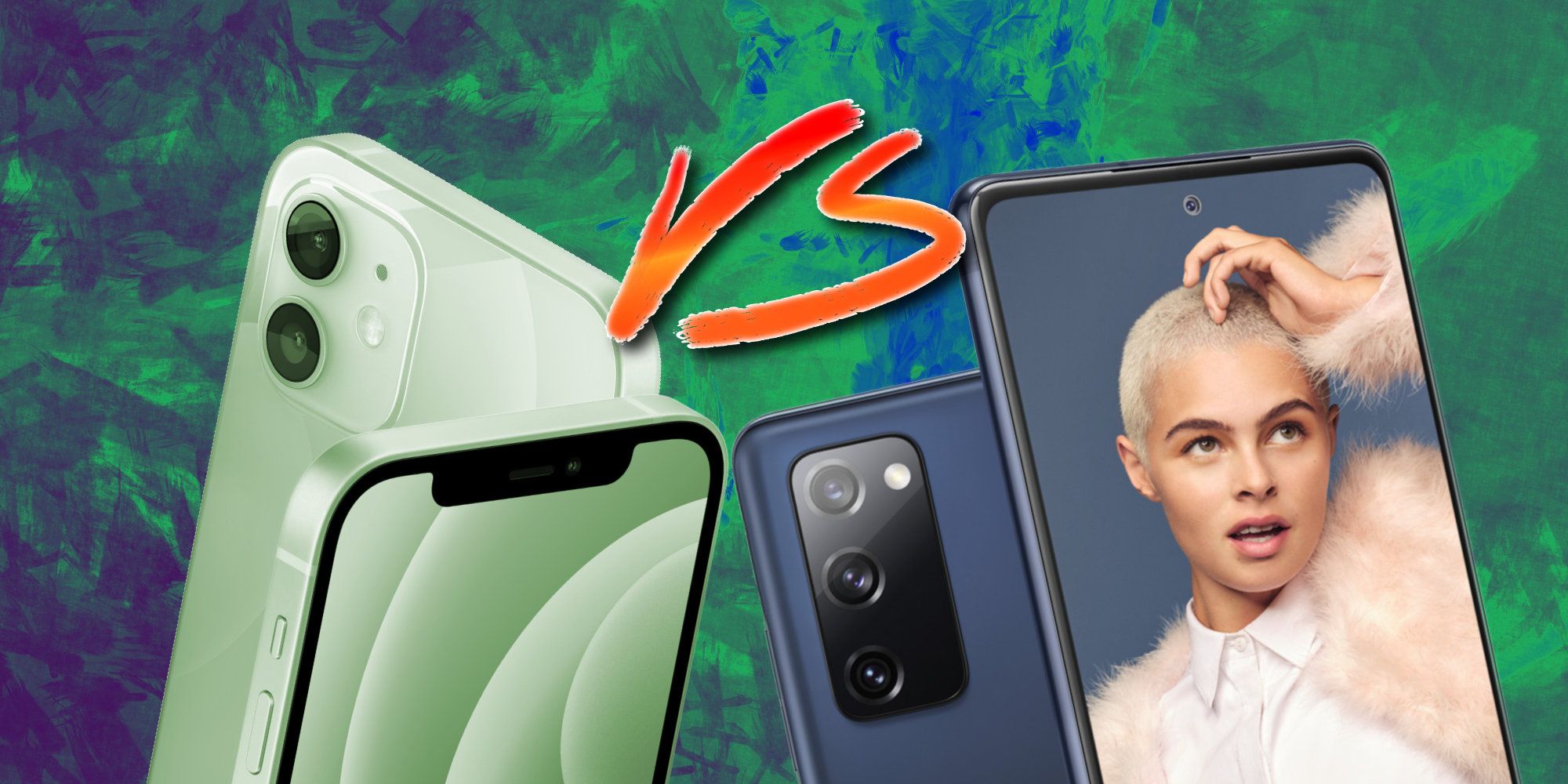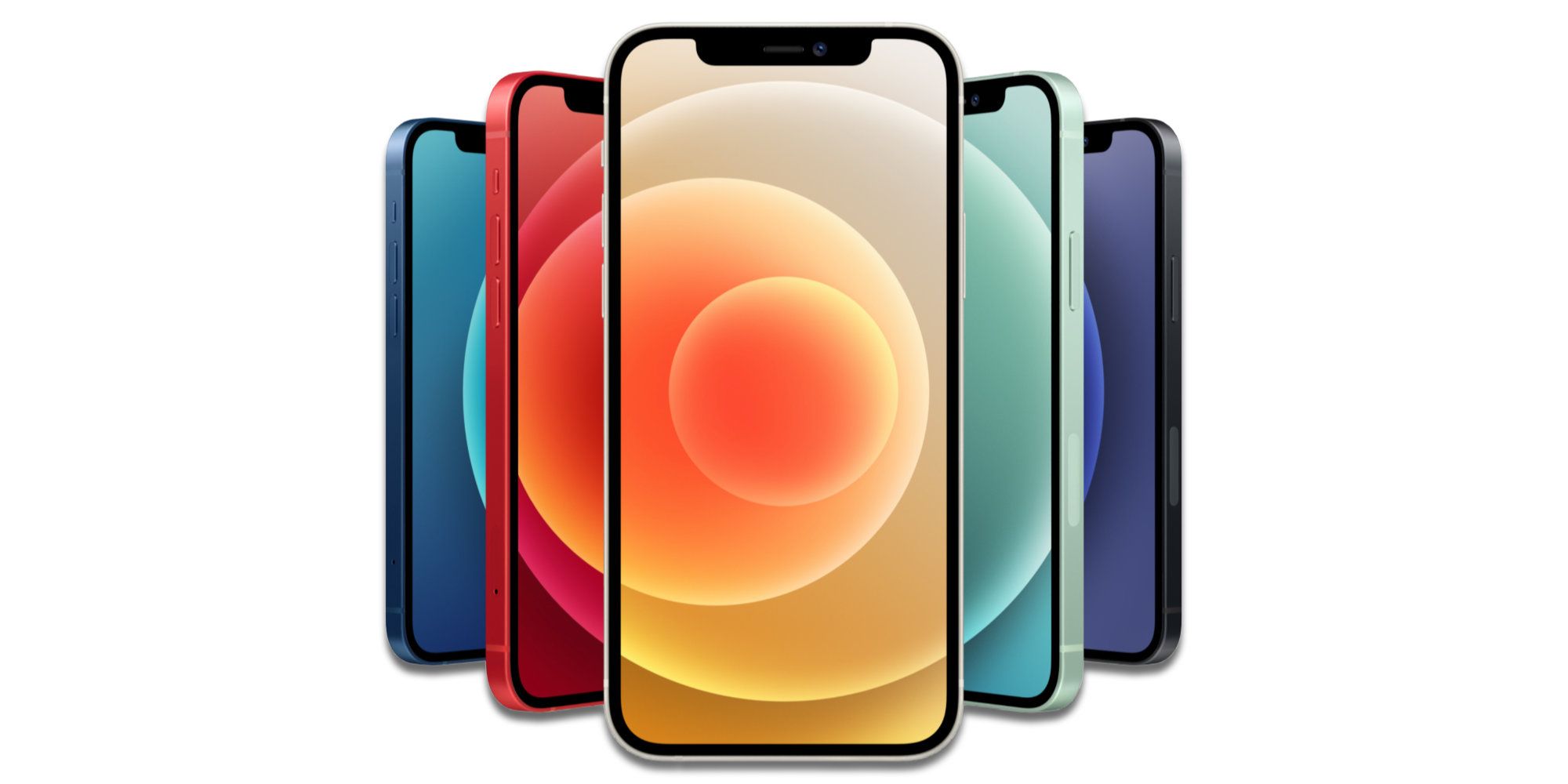
Apple's iPhone 12 and Samsung's Galaxy S20 FE are two relatively low-priced, but full-featured smartphones. That means the old rivals are competing once again, although this time it is in the 5G market. Whether the iPhone 12 or the Galaxy S20 FE is the right choice comes down to multiple factors, including which device the buyer is upgrading from.
The ongoing battle for the top smartphone in the United States has pitted Samsung against Apple since the very beginning of the smartphone industry, Apple offered the first iPhone in 2007 and Samsung following suit in 2009. Samsung has been making cell phones since 1988, the time when every cell phone had a physical number pad for dialing. Given the long history in the market, Samsung may have expected an easy win against upstart Apple. However, a smartphone is more computer than phone and Apple had already beat the odds to survive the overwhelming onslaught of cheap, but powerful, Windows PCs. By 2011, the design and marketing challenge escalated the two companies into a legal battle that raged for five years. Despite this contentious history, Apple and Samsung continued to work together and still do. In fact, Samsung manufactures displays that are used in Apple's new iPhone 12 lineup.
The Apple iPhone 12 ($799) and the Samsung Galaxy S20 FE ($699) have similar pricing and many features in common. Both offer 5G, but with some differences that are worth noting. The Galaxy S20 FE only supports the faster mmWave speeds with Verizon and that model costs $50 more. The iPhone includes mmWave and Sub-6 and also supports the most U.S. bands of any phone on the market. Apple's 5G has a possible caveat of its own, though. Apple's smartphones automatically switch to LTE if 5G 'isn't needed' in order to save battery life. Of course, Apple phones run iOS, while Samsung uses Android, so that is an important consideration. If you are already using Apple, switching to Android is harder than the other way around. App developers tend to favor the iPhone, so some popular apps used on an iPhone may not be as easily found on Android.

The most obvious difference between these smartphones is the size. The Samsung Galaxy S20 FE is half-inch taller than Apple's iPhone 12, and it is also a little wider and a little thicker, with an additional ounce of weight. Samsung’s screen is 0.4-inches larger. Apple does make a 6.7-inch iPhone 12 Pro Max, though it costs $300 more, so that isn’t a fair comparison. Apple and Samsung are both known for top-quality displays and both feature OLED technology. Galaxy S20 FE has 120Hz refresh rate, which means smoother scrolling. Apple offers TrueTone which matches display warmth to the lighting of the room. Both smartphones use top-of-the-line processors, though Apple's chips continue to outpace the rest of the industry, with Apple describing the A14 as faster than most PC laptops. Galaxy S20 FE's Qualcomm Snapdragon 865 is the top processor currently used in Android phones. All of that power is impressive, but is it really needed? It turns out that among the best uses of super powerful processors is to improve photos and videos.
Apple claims to have made big leaps in that regard and demonstrations of its unreleased iPhone 12 series seem to confirm much better camera results. Of course, Samsung's phone does image processing as well. The iPhone 12 comes with an f/1.6 wide and an f/2.4 ultra-wide camera. The Galaxy S20 FE includes an f/1.8 wide, an f/2.2 ultra-wide, as well as an f/2.5 telephoto that offers three-times optical zoom. Samsung clearly wins in the telephoto category, but Apple could offer better photography overall. The wide aperture of f/1.6 means much more light enters the lens and low-light photos are greatly improved. Despite the stark differences in these two phones, the iPhone 12 and Galaxy S20 FE are surprisingly well matched, just as Apple and Samsung are.
from ScreenRant - Feed https://ift.tt/37mQBNq

No comments: